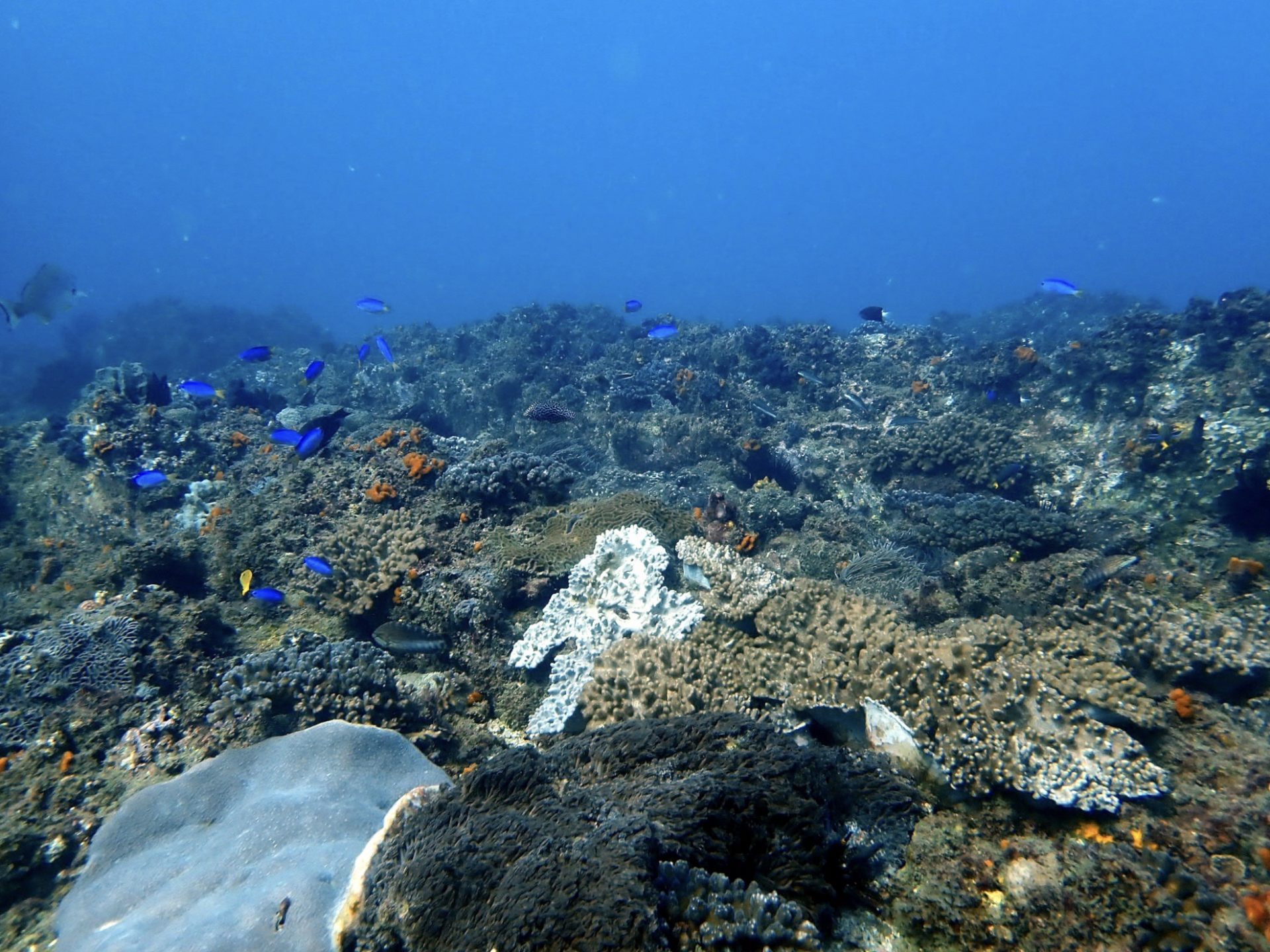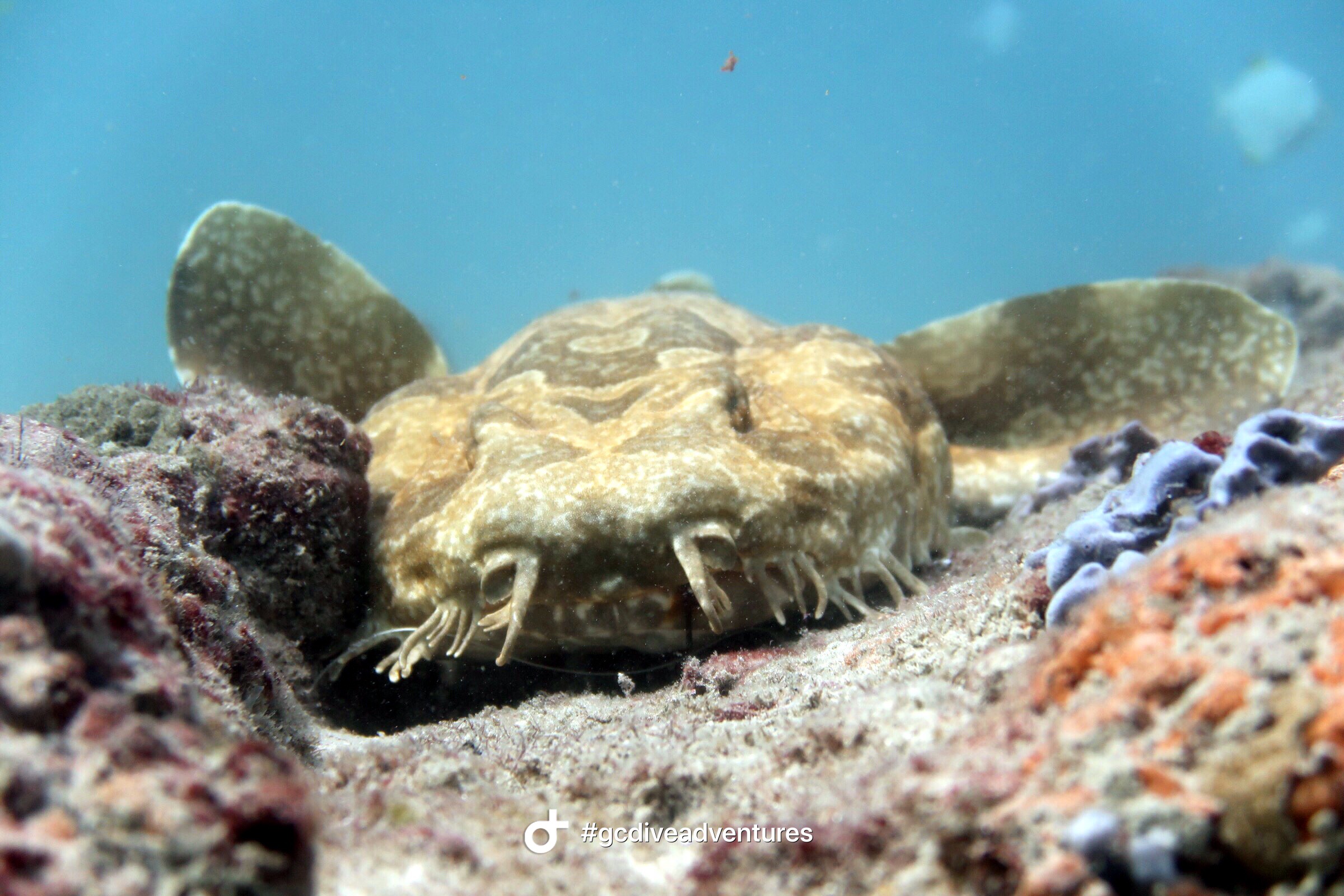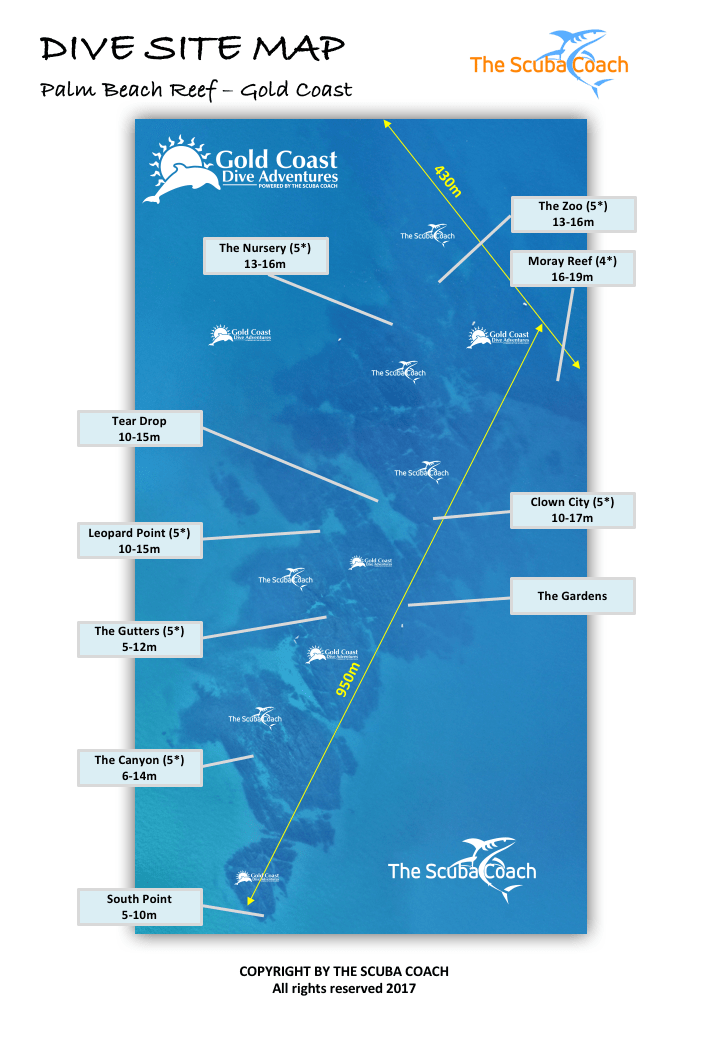Palm Beach Reef is the largest coral reef system on the Gold Coast. The reefs footprint is about 2-3 times larger than the exposed part of Cook Island and it would take about 10-20 dives to explore the site in its entirety. Palm Beach Reef is truly amazing, full of surprises and absolutely underrated. Even many Gold Coast locals have never dived this magnificent dive site and have no understanding or imagination of its beauty. This is manly due to the lack of commercial diving operators, offering dive charter trips to the reef. Dive Shops often prefer to visit closer sites such as the Gold Coast Seaway and Wave Break Island or Cook Island for those operators based on the Tweed Coast. Gold Coast Dive Adventures is proud to conduct dive charter trips to Palm Beach whenever conditions allow the cruise from the Gold Coast Seaway.
How to get there
Palm Beach Reef is only accessible by boat via the Gold Coast Seaway or the Tweed River. The nearby Currumbin Creek seems to be the closest access point however, this bar crossing is shallow and dangerous. Commercial operators will usually steer clear of it. The boat ride from the Gold Coast Seaway can be as short as 25min depending on wave height.
Marine Life
Palm Beach Reef is a rocky reef, overgrown with a variety of marine plants including soft and hard coral. The shallower parts of the site offer a huge variety of tropical fish including anemone fish (clown fish). During the summer months, the Gutters of the reef are a hotspot for leopard sharks and also have the occasional grey nurse shark cruising around during the winter months. The colourful underwater scenery offers also smaller critters for all macro lovers. Palm Beach Reef is a true nudibranch heaven. Other local residents all year round include turtles, rays and woebegone sharks.
Diving Conditions
The reef is slightly protected from the south-easterly swells due to Point Danger. Visibility around the reef can vary but is usually the best out of any Gold Coast dive site. Due to the size of the reef, the dive plan can be varied to suit different conditions and experience levels of divers. The depth varies between 6m and 25m. Days with stronger currents are rare but do occur. The shallower section between 6m and 12m are the most colourful areas and most easy to dive.
Dive Sites
Over time, we have explored several sites and adopted their previous nicknames, given by Southport Fish and Dive Centre, a local diving operator that dived the reef regularly about one or two decades ago. The sites we dive include:
o The Zoo (13m to 16m)
o Southern Comfort (10m to 16m)
o The Nursery (7m to 14m)
o Moray Reef (16m to 19m)
o Clown City (10m to 17m)
o Turtle Point (14m to 16m)
o The Gutters (5m to 12m)
o The Bait Reef (6m)
o Leopard Point (10m)
Dive Difficulty
Palm Beach Reef is suitable for all experience levels due to its depth and general calm conditions. There is hardly any current around the reef. We still recommend to follow and experienced dive guide and follow.
Our favourite Dive Plan
We love the shallower sections of the reef in between 8m and 14m of water. We often do drift dives from one site to another other. Clown City is a colourful site with as you can guess, a large population of anemone fish. From there you can drift towards the Gutters, the hot spot for leopard sharks in summer.







